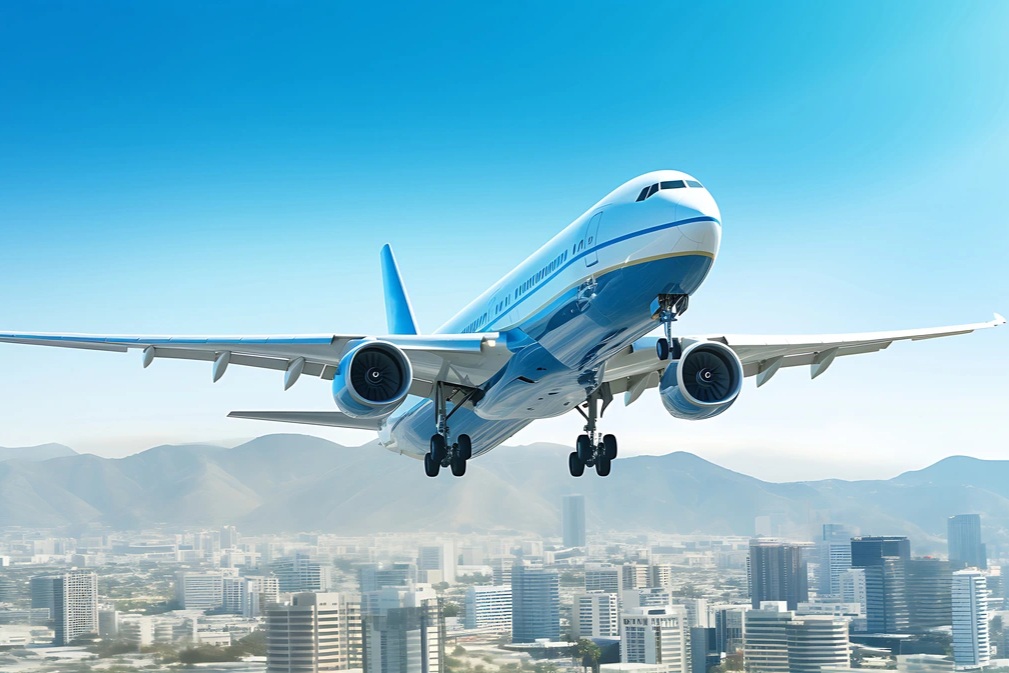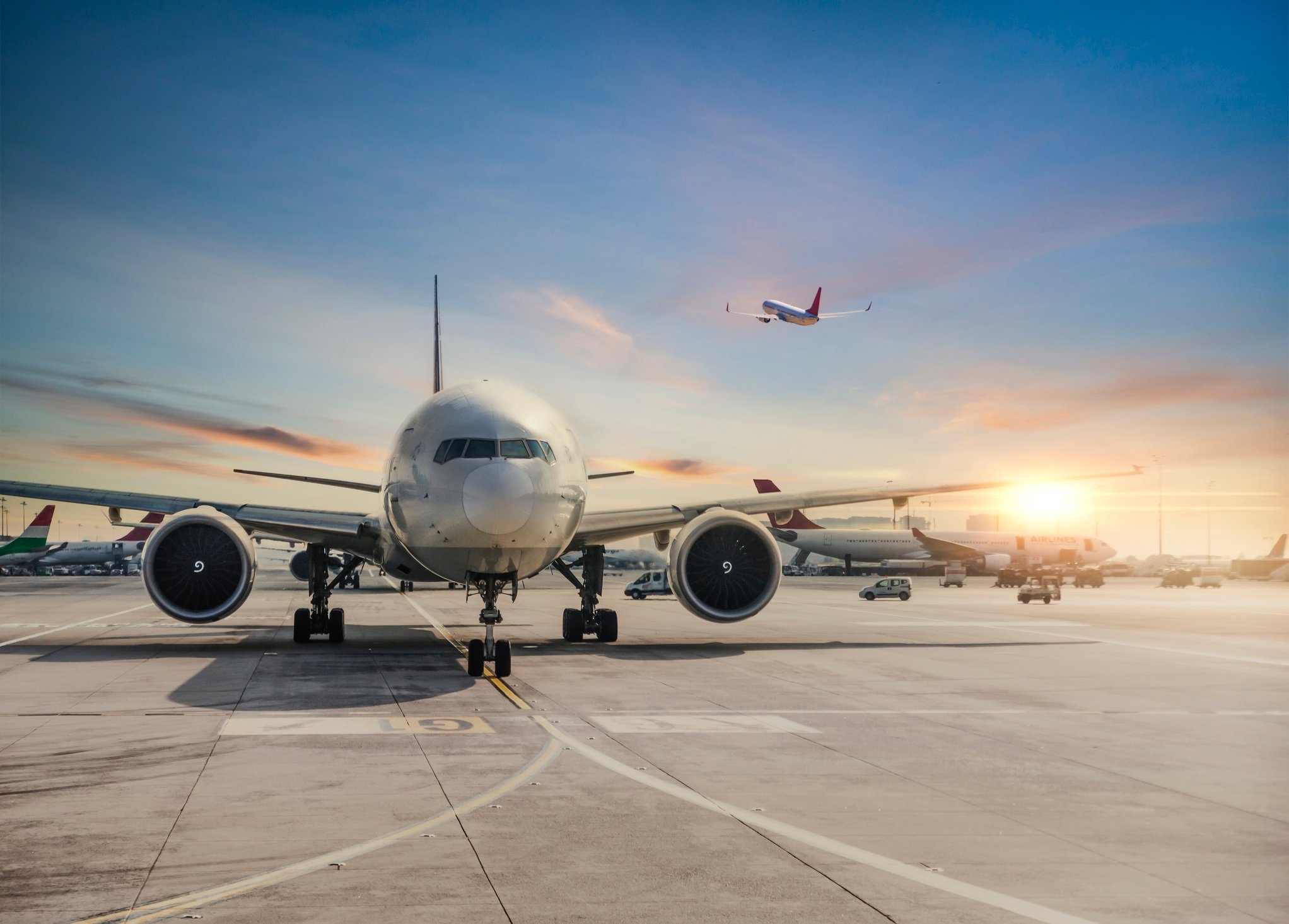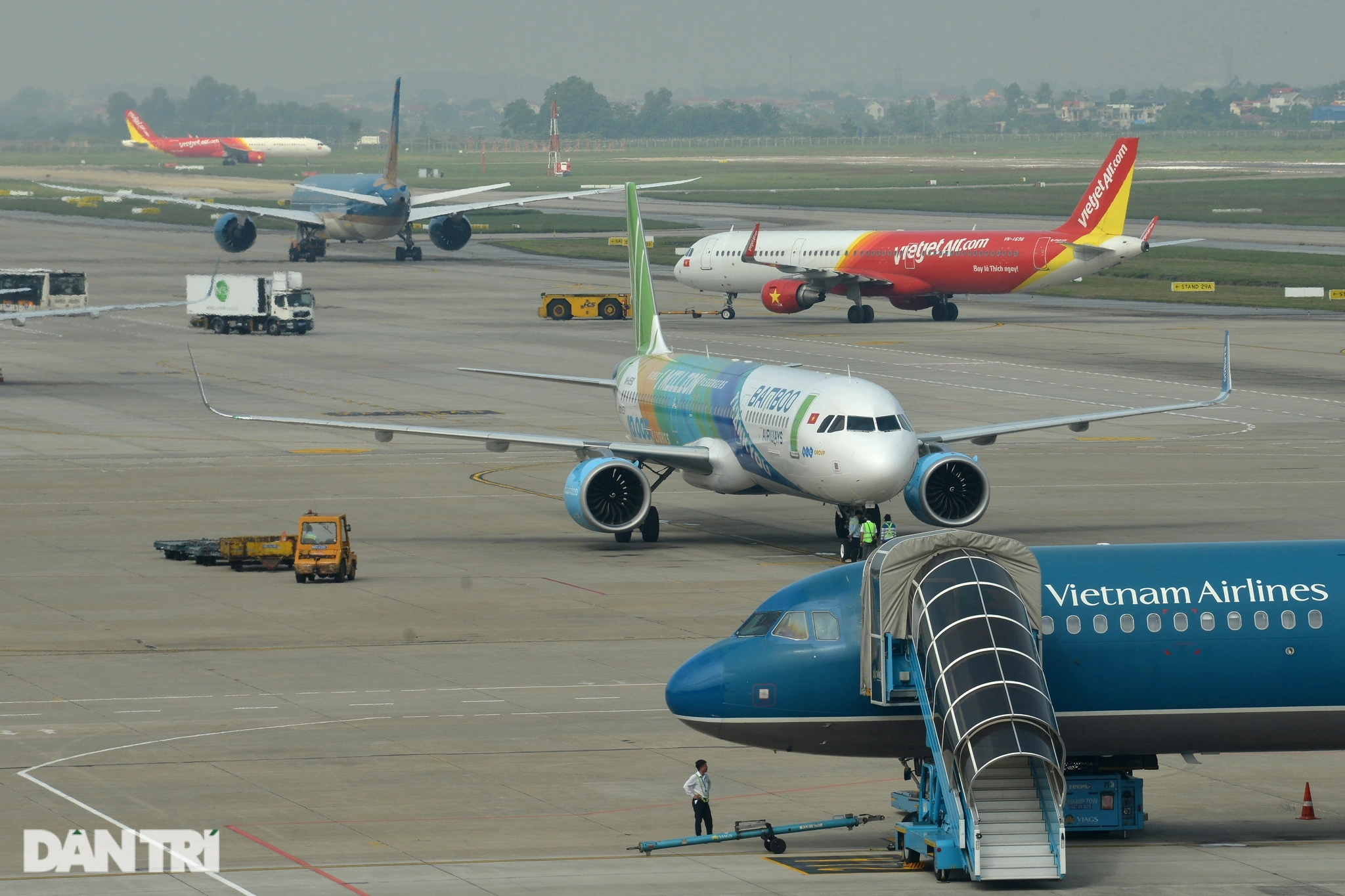Challenges beset the global aviation industry
The global aviation industry is expected to face a series of challenges, from geopolitical conflicts, escalating costs to trade tensions... These factors can put great pressure on the industry's growth prospects.
In addition, although passenger numbers have fully recovered after the pandemic, airlines around the world still face many cost pressures, from prolonged aircraft delivery delays, supply chain bottlenecks to declining profits.

Airlines around the world are still facing a lot of pressure (Photo: Travel).
According to experts, global trade tensions have plunged the aviation industry into a new vortex of volatility. While European and Asian airlines are still recording stable flight demand, American airlines are witnessing a decline, along with difficulties in forecasting passenger demand and operating costs.
"Weak consumer sentiment and high inflation will certainly make people tighten their purse strings," said Aengus Kelly, CEO of AerCap, the world's largest aircraft leasing company, in the report.
Although the market is seeing rising aircraft lease rates and relatively stable oil prices, uncertainties over aircraft shortages and trade tensions remain key concerns.
Andy Cronin, head of aircraft leasing company Avolon, said any impact on the supply chain would be detrimental as the aircraft industry struggles to meet demand. He predicted that major aircraft manufacturers will continue to face capacity constraints for at least the next decade.
Where does growth come from?
The aviation industry has had a turbulent year, affected by delays in aircraft deliveries, slow engine repairs, security issues in the Middle East and a labor shortage.
However, the International Air Transport Association (IATA) still forecasts an increase in airline industry profits. Net profits for the entire airline industry are expected to reach $36 billion in 2025, up from $32.4 billion in 2024. However, this is still slightly lower than the previous forecast of $36.6 billion. The industry's net profit margin is also expected to rise to 3.7%, compared to 3.4% last year.
Total industry revenue is estimated at $979 billion, a new record high, although slightly lower than the $1 trillion mark that was previously forecast.
IATA said the industry’s positive results were driven by two key factors: lower fuel costs and higher operating efficiencies. Jet fuel prices are forecast to average $86 per barrel in 2025, reducing total fuel costs to $236 billion, or $25 billion less than last year.
Load factor is also expected to hit a new record of 84% on average in 2025, reflecting airlines operating more efficiently amid challenges to fleet expansion due to supply chain disruptions in the aerospace industry.

There are two main factors driving the positive results of the aviation industry: reduced fuel costs and higher operating efficiency (Photo: iStock).
Campbell Wilson, CEO of Air India, said 2025 was a year full of surprises for the aviation industry, from politics, tariffs to regional tensions. However, he believes in the long-term growth potential of the Indian market, the world's third largest aviation market, which is growing at 8-10% per year.
Similarly, Mr. Adrian Neuhauser, CEO of Avianca (Colombia), admitted that the aviation industry is vulnerable to global instability, but up to now, the number of passengers and revenue remains stable.
According to IATA, the Asia- Pacific region will have the fastest growth in global air demand in 2025. Revenue passenger kilometers (RPK) are expected to increase by 9% year-on-year.
IATA also believes that North America will continue to lead in absolute terms of profits. The increase in demand in Asia is explained by the relaxation of visa policies in some countries such as China, Vietnam, Malaysia and Thailand.
IATA notes that if RPK volumes increase consistently over several months on a route, airlines can increase frequencies or use larger aircraft, thereby increasing revenue and capturing more market share.
However, the economic picture in the region remains challenging, with IATA warning that GDP growth in some Asian countries, especially China, is being revised down.
Picture of Vietnam aviation industry
International organizations have assessed that Vietnam’s aviation industry is recovering strongly and developing rapidly with many positive growth potentials in the region and globally. The International Air Transport Association (IATA) forecasts that Vietnam will be the fifth fastest growing aviation market in the world, reaching about 150 million passengers by 2035.
According to Boeing’s Commercial Aviation Market Outlook (CMO) report, Vietnam is among the fastest growing air transport countries in the region. The number of passengers traveling to, from and within the country is forecast to double within the next decade, reaching more than 75 million per year.
The International Civil Aviation Organization (ICAO) also assessed the safety capacity of Vietnam's aviation industry at 78.14%, higher than the global average requirement of 75%. ICAO highly appreciated key areas such as flight operations management, aircraft operations, airport management, etc.
Vietnam's domestic aviation market is shaped by airlines such as Vietnam Airlines, Vietjet Air, Bamboo Airways, and Vietravel.
Vietjet Air is positioned as a low-cost airline, Bamboo Airways is a hybrid airline between the low-cost and traditional airline models. Pacific Airlines is a subsidiary of Vietnam Airlines, operating under the low-cost airline model.
Airlines are competing fiercely for market share. According to Vietjet Air's annual report, in 2024, the airline will account for 44% of the market share. Meanwhile, Vietnam Airlines is close behind, accounting for 42%. Bamboo Airways accounts for 6.9%.
In the context of an air transport business environment with many difficulties and advantages intertwined, airlines have taken action to receive more aircraft or expand flight routes.
According to the report, as of March 31, Vietnam Airlines had a total of 103 aircraft, including 46 owned aircraft and 57 leased aircraft. The airline opened and restored many routes connecting Vietnam with dynamic economic and tourism centers such as Hanoi - Moscow (Russia), Hanoi - Milan (Italy), Ho Chi Minh City - Beijing (China), Da Nang - Osaka (Japan), Nha Trang - Busan (Korea), Phu Quoc - Seoul (Korea)...
As of July 1, Vietnam Airlines operated 69 routes to 37 destinations in 21 countries and territories. In its development strategy, the airline has a project to invest in 50 new generation narrow-body aircraft, with a total investment of more than VND92,000 billion, expected to be implemented in the period 2030-2035.
With Vietjet, the airline also expanded its international flight network, opening direct flights from Nha Trang to 3 major cities in Russia; operating flights from Hanoi, Ho Chi Minh City to China. At the same time, this low-cost airline also opened new routes to India, Japan and increased the frequency of domestic flights to Da Nang, Nha Trang, Tuy Hoa, etc.
The airline associated with self-made billionaire Nguyen Thi Phuong Thao has also continuously invested in and developed a modern fleet. Vietjet recently ordered 20 more A330neo wide-body aircraft from Airbus, bringing the total number of A330neo aircraft ordered to 40. At the 2025 Paris Air Show, Vietjet placed a new order for 100 aircraft and 50 options to purchase new Airbus A321neo aircraft.
In the new strategy, Vietjet will also take on ground service at the country's largest airports. The Ministry of Construction also approved the winning bid for the Project to invest in the construction and business of aircraft maintenance services No. 3 and No. 4 at Long Thanh airport.

Vietnam is among the countries with the highest growth rate in air transport in the region (Photo: Tien Tuan).
With Vietravel Airlines, the airline also focuses on increasing the size of its fleet in the second half of the year, focusing on unifying the Airbus A321/A320 fleet; activating the strategic flight network, and being ready to expand flights to the international market.
The airline also plans to launch two new domestic routes connecting Ho Chi Minh City - Hai Phong and Ho Chi Minh City - Thanh Hoa, and resume the Hanoi - Nha Trang route. At the same time, the airline wants to operate a series of charter flights connecting Hanoi - Anhui (China) from October 2025.
Vietravel Airlines also aims to have a fleet size of 30-50 aircraft by 2030 with a flight network covering Southeast Asia, Northeast Asia and the Middle East.
In addition to the operations of these airlines, Vietnam Airlines also welcomed a new airline from Sun Group. On August 10, Sun PhuQuoc Airways welcomed the first aircraft manufactured and delivered in Germany to Phu Quoc airport. According to the plan, the airline will receive 8 modern aircraft and take off this year.
On a broader scale, the Government also focuses on investing in upgrading infrastructure, reducing air and ground congestion. The Government has implemented the construction of Long Thanh airport, expanded the construction of Tan Son Nhat Terminal 3; at the same time, cooperated and expanded private investment in new airports (Van Don airport...), further enhancing the quality of airports according to international standards to attract and distribute the load at Tan Son Nhat and Noi Bai airports.
Source: https://dantri.com.vn/kinh-doanh/nganh-hang-khong-gap-du-loai-kho-khan-dong-luc-nao-de-cat-canh-20250815002414688.htm




![[Photo] Cambodia's Techo International Airport Officially Opens](https://vphoto.vietnam.vn/thumb/1200x675/vietnam/resource/IMAGE/2025/9/9/330836bb28ad4ee4bdd512cc1a2d0849)
![[Photo] General Secretary To Lam chaired the Politburo's working session with the Standing Committees of Party Committees of Central Party agencies.](https://vphoto.vietnam.vn/thumb/1200x675/vietnam/resource/IMAGE/2025/9/9/8343386e1e8f43c6a3c0543da7744901)






























![[Photo] Politburo works with the Standing Committees of Vinh Long and Thai Nguyen Provincial Party Committees](https://vphoto.vietnam.vn/thumb/1200x675/vietnam/resource/IMAGE/2025/9/8/4f046c454726499e830b662497ea1893)



































































Comment (0)